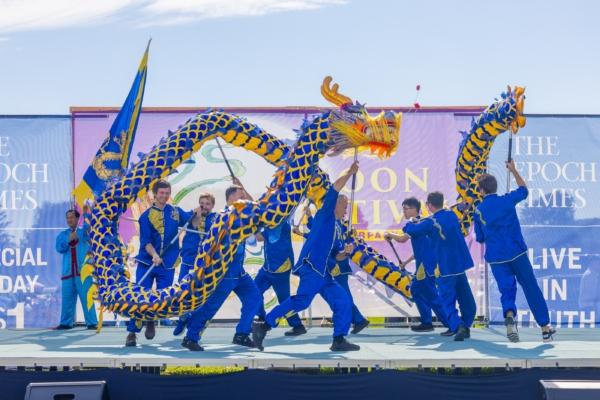Largest dragon ever unearthed from the Hongshan culture.
In the vast, windswept plains of Inner Mongolia, where the wind howls like an overenthusiastic choir in desperate need of a conductor, and the sun blazes down with the tact of an irate traffic warden, a group of Chinese archaeologists made a discovery that would have even the most cynical scholar scrambling for their monocle.
On Sept. 22 (which just happened to be Bilbo and Frodo Baggins’ birthdays), they found it nestled in the parched earth, lay the largest jade dragon ever unearthed from the Hongshan culture, a find that promised to be the archaeological equivalent of discovering Tutankhamun’s tomb—if Tutankhamun had been six inches tall and carved from a shiny green rock.
A Jade Dragon
Now, before you get carried away with visions of a fire-breathing colossus rampaging through ancient China, let’s clarify: this was no monstrous Smaug, no terror of Tolkien’s imagination.
Instead, it was more along the lines of what you might use as a decorative paperweight.
Measuring a modest 15.8 centimetres long, it was less “dragon of the apocalypse” and more “ornament for the discerning jade enthusiast.”
Yet, for something that could fit in the palm of your hand, this dragon was no ordinary trinket. Its intricate scales were so meticulously carved that you’d half expect it to slither off the display case and make a beeline for the nearest pile of historical records.
And while it wasn’t exactly equipped to defend a hoard of gold, it might just have guarded a particularly prized bottlecap.
Chinese Dragons Were Revered
This little jade figure is a symbol of power, cosmic order, and all the other grandiose terms scholars love to throw around at conferences to justify their travel grants.
In ancient China, dragons were revered as the emperors of the animal kingdom, a status that must have been rather demoralising for the oxen slogging away in the fields.
One can imagine them casting envious glances skyward, dreaming of sprouting wings and abandoning their ploughs for a more dignified career as a celestial guardian.

Legend or Folklore?
But where do dragons come from?
Some argue that the myth of the dragon grew out of the discovery of dinosaur bones. Humans from millennia ago, puzzled by the colossal skeletons, decided that “giant lizard” was just too dull and opted for something with a bit more flair.
Others speculate that the dragon is a sort of cultural Rorschach test, reflecting humanity’s collective fears and fantasies: a bit of snake here, a dash of eagle there, and before you know it, you’ve got yourself a full-blown mythological creature.
Whatever the reason, dragons have soared through our collective consciousness for millennia, like seagulls at a particularly chaotic seaside chip shop, stirring up trouble wherever they go.
From the benevolent water dragons of China, who bring rain to the fields and an occasional unwelcome shower to the emperor’s laundry, to the gold-hoarding beasts of European folklore, these creatures have done it all.

Symbols of Power or Chaos?
And so, as the jade dragon sits in its museum display, gazing out with an expression of vague bewilderment, it stands as a testament to humanity’s enduring obsession with these mythical beasts.
Are they symbols of power and protection, or do they represent the chaos and unpredictability of the natural world?
One thing is certain: whether they’re hoarding gold or bringing the rain, dragons continue to captivate us.
And as long as there are dusty archaeologists willing to brave the scorching plains of Inner Mongolia, armed with little more than a trowel and a slightly inflated sense of self-importance, we can rest assured that the world’s fascination with these mythical beasts will endure.

